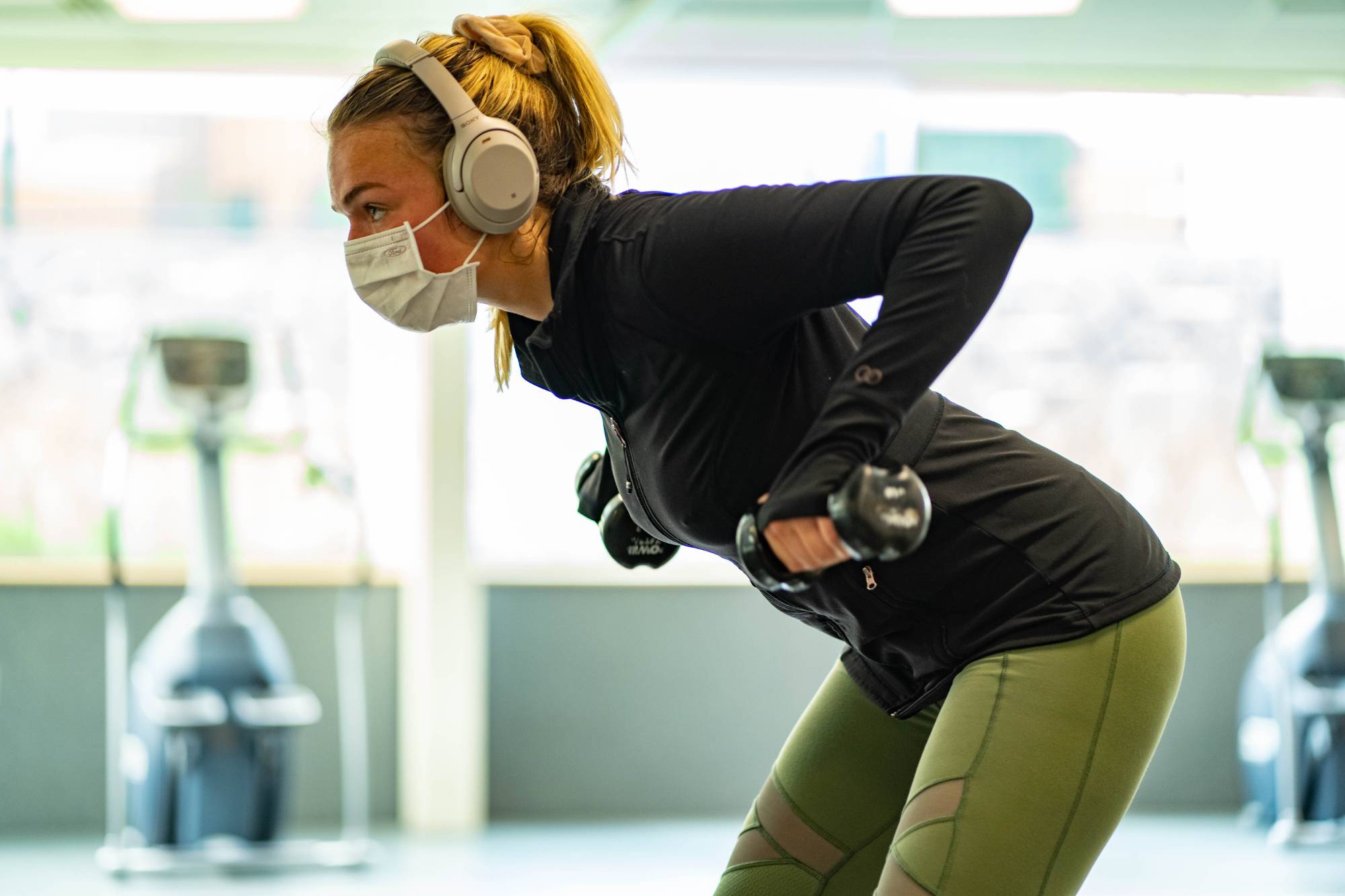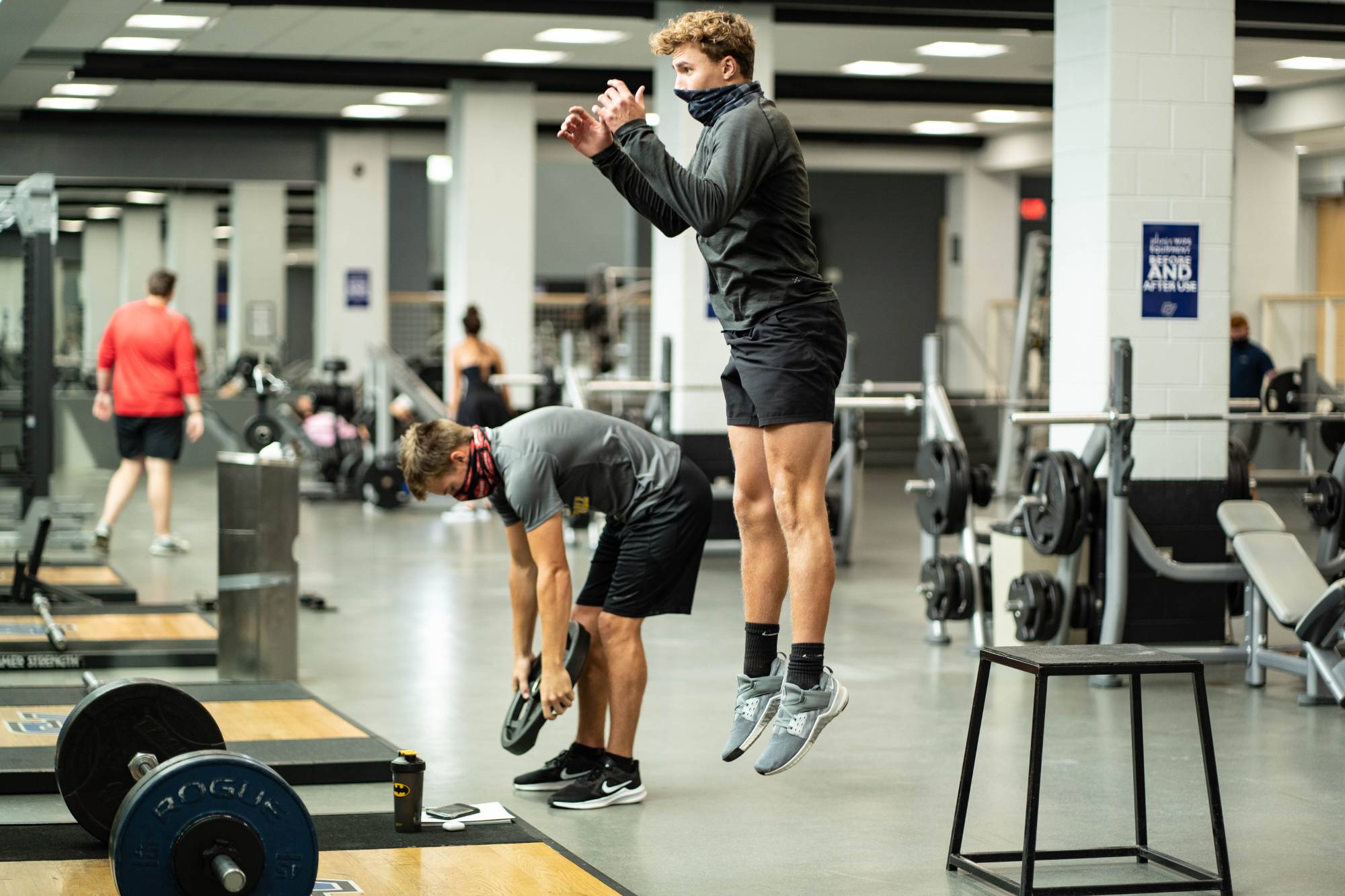Blog
Permanent link for Exercising After COVID-19 on October 28, 2020
We are living in a new normal, a normal of face coverings and social distancing. Because COVID-19 is still so new to us, there are a lot of questions and uncertainty around the virus and its impact. It is, however, important to get back to some form of “normal” for your overall health. We can do this while adapting to the recommended Center for Disease Control (CDC) guidelines and keeping others safe.
How COVID-19 Effects Your Body
COVID-19 is a viral infection; the virus sticks to the small
hairs found in your nose and cells found in your mouth. Once the virus
has attached to the cells in your body, the active replication starts
almost immediately in the upper respiratory tract. 80% of people will
have mild symptoms such as a cough, fever, and loss of taste or smell.
Of that, 13.5% of people will have to be hospitalized due to shortness
of breath. Symptoms and signs of distress will appear in individuals
10 days after they contract the virus. After you contract the virus,
it is possible to get your lungs back to normal, but it will not be an
overnight fix. As a result of COVID-19, your lungs will begin to
develop scar tissue, which will take approximately six months to a
year to fully heal and get back to normal oxygen levels. After you
contract the virus and are symptom-free, you are able to get back to
daily activities, such as working out. However, you should consult
with your primary care provider on the best course of action for your
personal needs.
Before Starting Back Up with Exercise
Upon
arrival back into your fitness or exercise routine, make sure you are
limiting your alcohol and tobacco consumption, eating healthy meals,
trying not to skip meals, drinking plenty of water, and maintaining a
healthy sleep schedule to aid in your body’s healing process. Drinking
alcohol does not cure COVID-19, and the excess use of alcohol can
be harmful by increasing your health risks. Before you enter into
exercise, make a plan for modified exercises on your first day back.
Having more than one plan and being flexible is also important for
easing back into your routine. Some things to keep in mind:
- Breaking an intense 30-minute exercise into two 15-minute low to moderate sessions
- Modifying your workout
- Checking facility websites for updated cleaning, capacity guidelines, and any equipment restrictions
During Exercise
Once you are able to get back to exercise, avoid pushing yourself
too hard; your body needs time to heal. You should only be working at
about 50% of your usual intensity, and slowly ease your way back into
it. Make sure to stay hydrated when working out, and monitor any other
changes that your body may experience. Some individuals may feel
lightheadedness or dizziness when returning; try not to panic. Slow
down the workout and take a break to catch your breath. If symptoms
don’t subside, then, following CDC and facility guidelines, take your
face covering off to help maximize airflow. Try to avoid exercises
that are extra demanding of your cardiovascular system, like a HIIT
class, as it may be more difficult or cause more symptoms of
lightheadedness and dizziness. Finally, as always, keep up with CDC
guidelines to wash your hands regularly, stay six feet away from
others, and avoid face touching.
Staying active, whether it’s in the gym, outside, or at home, is beneficial to your health and wellness. Most forms of exercise can be performed almost anywhere. Especially now, it’s easy to find at-home workouts online. Whether you are someone who benefits from doing an at-home workout, going for a walk, run, bike ride, or hike, it’s important to keep moving and stay active. And don’t forget: stay hydrated, eat a healthy snack or meal, and do an active recovery cool-down to gradually lower your heart rate back to its resting state. If you go to the gym make sure to wash your hands with soap and water or use a hand sanitizer that is at least 60% alcohol, use your face covering, and maintain social distancing. Staying active and adapting a routine is one of the most important things you can do to help your overall health during this time.
By: Erin Colling
Resources:
- Exercising after COVID-19 Flyer
- GVSU Recreation & Wellness
- GVSU Alcohol & Other Drugs Services
- GVSU Campus Health Center
- GVSU Family Health Center
Sources:
- Reynolds, Colleen, et al. “How to Adapt Your Workout While Wearing a Mask.” OSF HealthCare Blog, 8 July 2020, www.osfhealthcare.org/blog/how-to-adapt-your-workout-while-wearing-a-mask/.
- “Should I Exercise with a Mask On?” Mercy Health Blog, 4 Sept. 2020, blog.mercy.com/coronavirus-covid-19-face-mask-while-exercising/.
- “What Are the Effects of COVID-19 on the Lungs?” Medical News Today, MediLexicon International, www.medicalnewstoday.com/articles/covid-19-what-happens-inside-the-body.
Categories:
Fitness
General Wellness
Posted
on
Permanent link for Exercising After COVID-19 on October 28, 2020.


